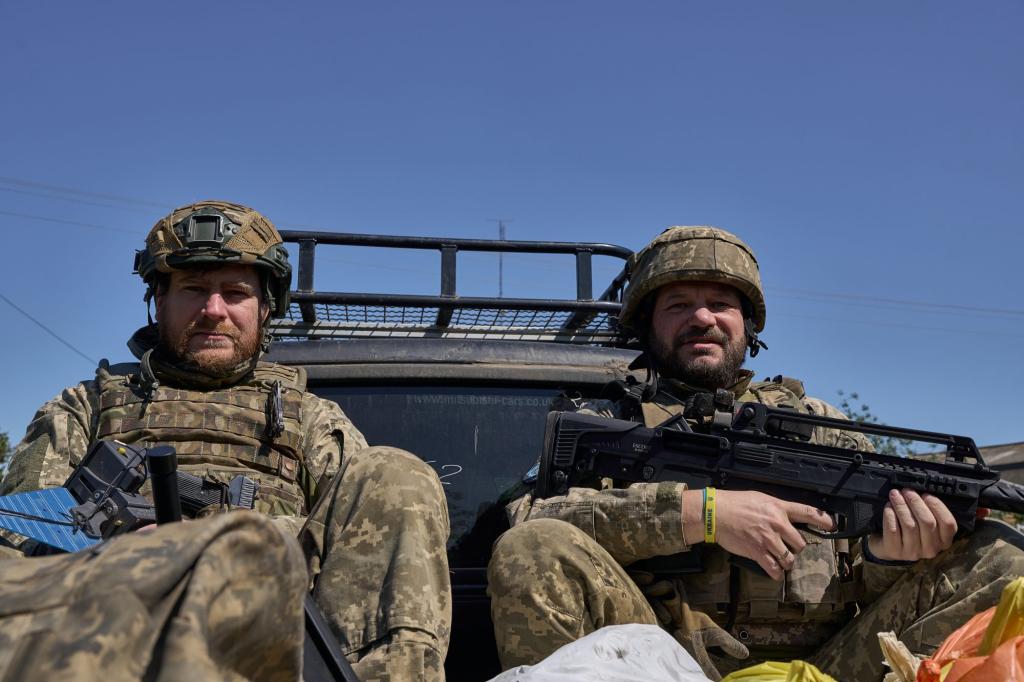US — shamefully — still has no plan for Ukraine to win


April 24 should’ve been a great day: After nearly six months of disagreement in Washington, President Biden signed a bill to provide Ukraine $61 billion for its war against Russia.
Yet the funding lacked a plan to help Ukraine win.
Rather, it would merely let Kyiv buy more “off the shelf” weapons and ammunition to keep Ukraine in the fight.
Or, as Defense Secretary Lloyd Austin told the Armed Services Committee, the US goal is to make sure that Kyiv “has help.”
Yet the aid alone isn’t enough to actually triumph and serves little more than a band-aid to stop the bleeding in the close fight — to halt Russian advances specifically in the eastern Donetsk Oblast near Chasiv Yar.
On Friday, Moscow renewed its offensive toward Kharkiv — and on late Sunday Vladimir Putin installed new leadership at the Russian Ministry of Defense to make sure it succeeds.
It does let Ukraine target and destroy high value/high payoff Russian weapon systems and shape the battlefield, and it creates space to allow Kyiv time to rebuild combat power for another counteroffensive.
But more will be needed.
National Security Adviser Jake Sullivan acknowledged that when he said the aid package was intended to “hold the line … to ensure Ukraine withstands the Russian assault.”
He added that Ukraine would need more funding to launch a counteroffensive in 2025, which would need approval from Congress and the White House — implying that, if elected, former President Donald Trump would not support the effort.
The aid bill also allows Ukraine to buy new ATACMS munitions that can strike targets as deep as 190 miles.
This could enable its forces to strike beyond its border and interdict Russian forces before they arrive on the battlefield.
It could also allow Kyiv to strike back against missile and drone launch platforms targeting civilians and critical energy infrastructure.
That’s a potential game changer — if there are no restraints on its use.
In December 2022, the Biden administration secretly modified HIMARS rocket launchers sent to Ukraine so they couldn’t be used to fire long-range missiles into Russia — a precaution it said was necessary “to reduce the risk of a wider war with Moscow.”
Will the new extended-range suite of ATACMS munitions come with the same restrictions?
It is questionable whether the White House ever thought Ukraine could win in the first place.
Afterall, then-Chairman of the Joint Chiefs of Staff Gen. Mark Milley advised Congress in 2021 that Kyiv could fall within 72 hours if a full-scale Russian invasion of Ukraine took place.
The fall of Ukraine seemed a foregone conclusion.
Yet Ukrainian battlefield successes complicated things.
The war ground to a halt, resembling a World I-like stalemate along a 600-mile front — and despite Biden’s 2020 presidential campaign promise of “no more forever wars,” Ukraine turned into just that.
Let’s not kid ourselves: US support has been about “weakening Russia” all along — and still is.
Winning was never the solution; it was all about managing an outcome that did not lead to a direct confrontation with Russia.
Defense became the strategy. Only Ukraine didn’t get the memo.
Ukrainians did, in fact, believe they could win and restore the territorial integrity of their country.
The White House’s desired “negotiation” end state became apparent in November 2022, shortly after Ukrainian troops pushed Russian ground forces out from Kherson and thwarted the Kremlin’s invasion force on the outskirts of Kyiv.
Milley told reporters at the Economic Club of New York that a victory by Ukraine might not be achieved militarily, adding, “When there’s an opportunity to negotiate, when peace can be achieved, seize it. Seize the moment.”
Last month Secretary of State Anthony Blinken said that the end of the war “depends mostly on Vladimir Putin and what he decides.”
Tellingly, he added: “The minute that Russia demonstrates that it’s genuinely willing to negotiate, we’ll certainly be there, and I believe the Ukrainians will be there.”
Days later, Austin stated, “Most conflicts of this nature end in some kind of negotiation and, again, when that happens, we want Ukraine to be in the best possible position so that it can achieve its goals and agree on the right things.”
Essentially, the White House is offering Putin his desired “sanitary zone” in exchange for what’s left of Ukraine’s sovereignty and eventual inclusion into the NATO alliance.
Zelensky will not accept that, nor will Europe: Putin will never abide by it.
Meanwhile, Russia is making incremental advances at a cost of nearly a thousand soldiers a day — and constructing defensive positions as they go to retain it.
Biden’s goal of “weakening Russia” has forced Ukraine to pay a terrible price.
Ukraine is at an inflection point on the battlefield and is finding out that winning outright was never Washington’s intention.
That’s a monumental tragedy not just for Ukrainians but the whole world.
Col. (Ret.) Jonathan Sweet served 30 years as a military intelligence officer. Mark Toth writes on national security and foreign policy.







